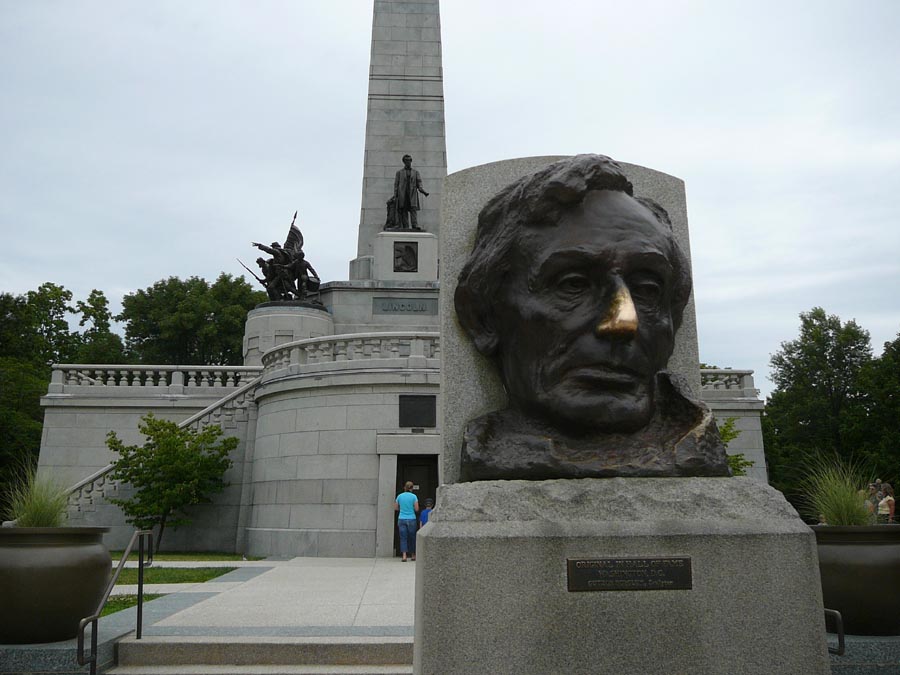
When you visit cemeteries to collect data and photos for your family research this summer, don’t forget to notice your surroundings. My term for this important element is “territorial context.” This information will serve you well if you share directions to the location with another person, or if you ever return to that location. You need to answer and record information about certain aspects of your destination. What direction are you facing? What landmarks do you see? Who are the neighbors?
This summer, I visited ancestors buried in Oak Ridge Cemetery in Springfield, Illinois. Although I was not equipped with a GPS, I had done my homework. A library book provided me with a detailed map of the cemetery, and internment forms I obtained previously contained lot numbers. More importantly, when I visited the site previously, I knew a remarkable landmark stood a short distance from the site. My family was a stone’s throw from Abraham Lincoln’s Tomb. You could not miss it. That detail told us we were near the family plot.

During the same trip, we visited another little pioneer family cemetery, which was not so easy to locate. When the paved road disappeared, we wondered if we were on the right course with barely visible ruts to lead us on. Corn fields in all directions blocked our view. Which way were we going? The sun was overhead, and we had no large landmark to guide us. But we pushed on until we came to a clearing surrounded by robust crops. This was the place. Next time, it will be much easier to find. Next time.

Joyce Lohse
www.LohseWorks.com
‘